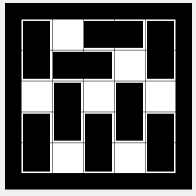What's New - January, 2011
[Home]
January 1, 2011: Happy New Year! We're back from a week's cruise in the Western Caribbean with family; round trip from New Orleans visiting Costa Maya, RoaTan, Belize, and Cozumel. We did the typical tourist stuff I suppose: visiting Mayan ruins, zip lining, beach and hot tub time with the grandkids, taking a Mexican Cooking class, and souvenir shopping. All the more enjoyable because Grandma and I were with kids and grandkids, Can't wait to start planning the next one!
January 6, 2011: A viewer recently discovered that
the default filenames used to store reaction time results in our "ReactionTimes"
program could not be changed, even though the program should allow it.
I'm sure that they worked at one time so the Version 3.0 probably broke it.
ReactionTimes Version 3.1
posted today should have it fixed.
January 13, 2011: Here's a nice little puzzle program that kept me busy for a couple of days this week while staying in out of the cold: Given 7 heads up coins, reverse them to all tails up by reversing 5 coins during each turn. ReverseCoins attempts to solve the puzzle for a range of total coins and coins to be reversed in each turn (not all combinations are solvable). Oh, and user play is supported also.
January 14, 2011: The October 3.4.2 release of our CutList program fixed one problem, but introduced another. Existing user manually arranged solutions could be updated OK but new ones could not be saved. CutList Version 3.4.3 released today fixes that problem.
 January 21, 2011: The
Gunports Domino Puzzle requires dominoes be placed on a board leaving the
maximum number of empty surrounded single squares (the gun ports). This initial version
allows user play on a set of predefined board sizes but watch this space for
user defined boards and a solver (I hope J).
January 21, 2011: The
Gunports Domino Puzzle requires dominoes be placed on a board leaving the
maximum number of empty surrounded single squares (the gun ports). This initial version
allows user play on a set of predefined board sizes but watch this space for
user defined boards and a solver (I hope J).
January 31, 2011: Linear programming is a technique for solving a large class of optimization problems which can be described by a set of linear equations. For example, A potter is making cups and plates. It takes her 6 minutes to make a cup and 3 minutes to make a plate. Each cup uses 3/4 lb. of clay and each plate uses one lb. of clay. She has 20 hours available for making the cups and plates and has 250 lbs. of clay on hand. She makes a profit of $2 on each cup and $1.50 on each plate. How many cups and how many plates should she make in order to maximize her profit?
Today's program, LPDemo, posting in our Delphi Techniques section provides an introductory interface to a free linear problem solver, LP_Solve. It displays (and solves) several included sample programs as well as the ability for the user to enter and solve additional simple problems.
